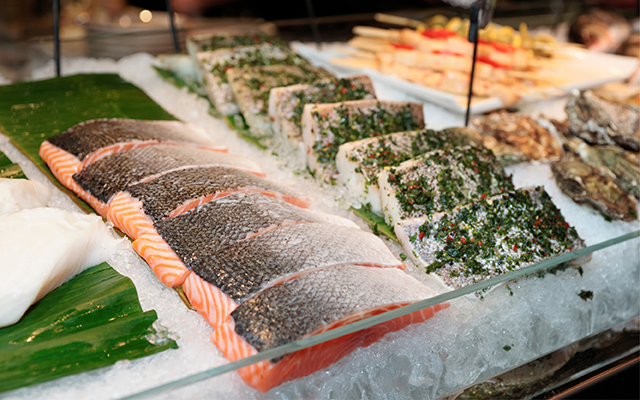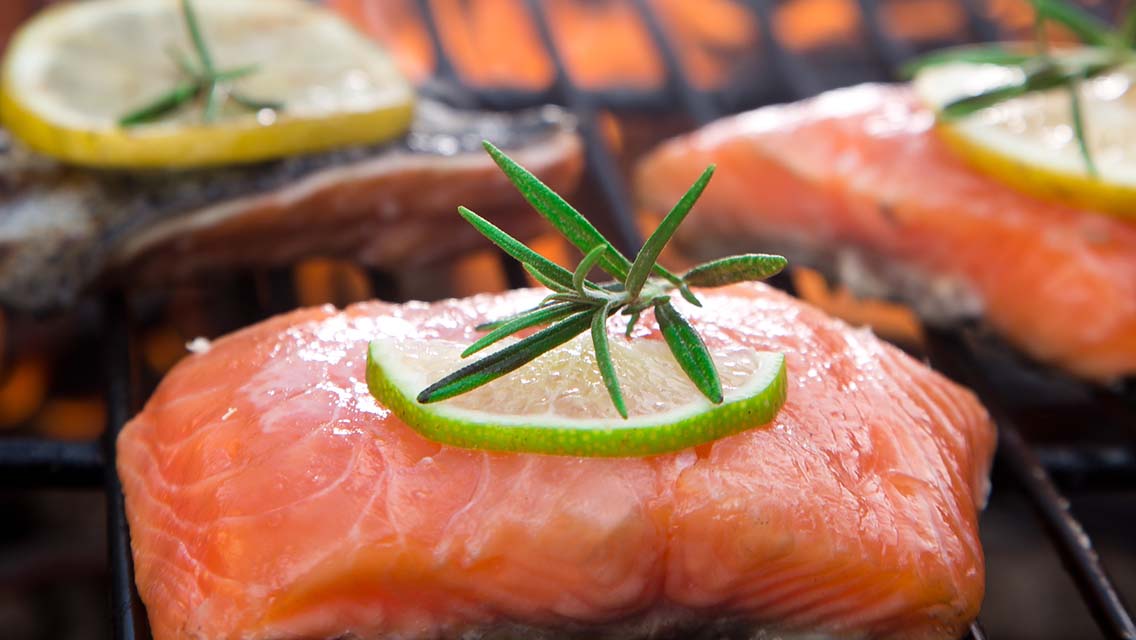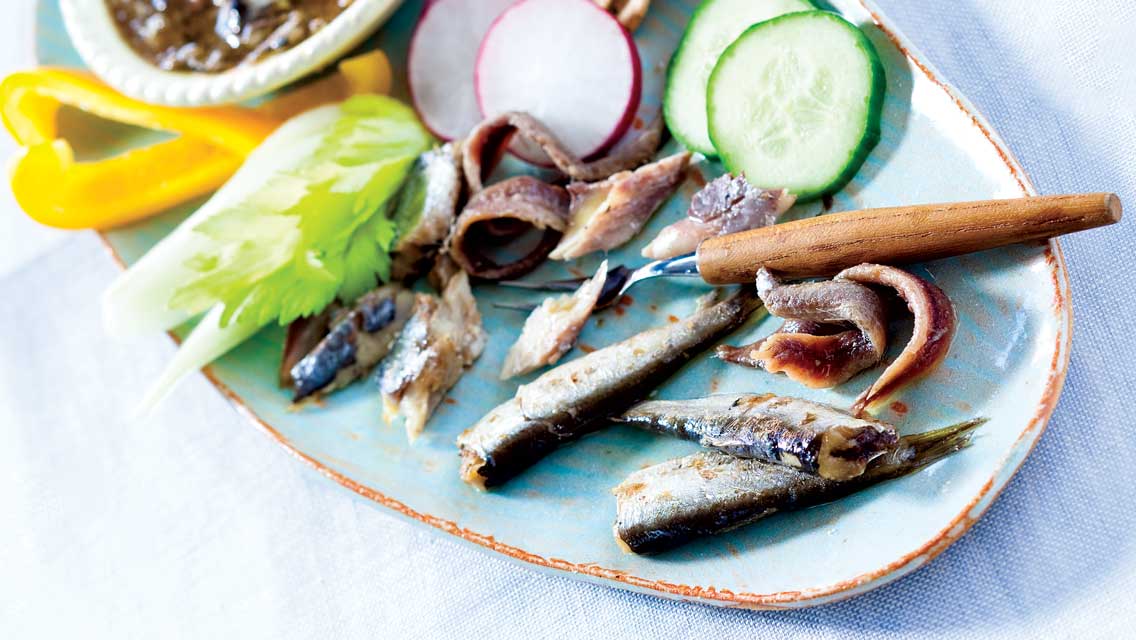For years we’ve been told that fish should be a regular part of our diet. Multiple studies have shown that people who regularly eat fish reduce their chance of dying from heart disease by more than one-third. Other research has linked fish consumption to lowered levels of stroke, depression, Alzheimer’s disease and many other chronic conditions. Most recently, a December 2009 study suggested that the long-chain omega-3 fatty acids primarily found in fish and seafood may help prevent and combat colorectal cancer.
Dariush Mozaffarian, MD, DrPH, FACC, codirector of the Harvard School of Public Health’s Program in Cardiovascular Epidemiology, recommends that people eat at least two servings of fish and seafood per week from a variety of species, especially those with dark, oil-rich meat. These species have the highest levels of long-chain omega-3 fatty acids, which improve health by altering gene function and the performance of membrane receptors in cells throughout the body.
Yet, for many health-motivated people, there are both practical and ethical concerns about what kinds of fish to eat. Despite all the health benefits associated with this great source of protein, it’s now widely known that some wild fish contain high levels of mercury and other contaminants and that some farmed fish are infested with parasites and overtreated with antibiotics. We’ve also heard disturbing reports of how overfishing has driven some species to near extinction and radically disturbed ecosystems in the process.
For families who are already careful about buying healthy and sustainably raised meat, dairy products and produce, the challenge of applying these same high standards to the myriad fish and seafood varieties out there — whether farmed or wild-caught — can seem daunting.
The bad news is that the problems that plague the waters and the creatures that live in them are real and very pressing. (For more on overfishing, see “Troubled Waters“.) The good news is that people who are passionate about both our food and our planet are helping consumers choose well — in a way that balances our personal health concerns with those of the planet.
For help making your own wise choices, consult the Marine Stewardship Council Web site (www.msc.org — learn more at left) and check out the charts on the following pages. And take heart: It is still possible to consume fish with a clear conscience and a worry-free mind. You just have to be willing to do your homework first.
How to Pick a Fish
There are a number of variables to consider in selecting fish and seafood — from sustainability and nutrition to the presence of heavy metals. Here, Taras Grescoe, author of Bottomfeeder: How to Eat Ethically in a World of Vanishing Seafood (Bloomsbury USA, 2008), shares his recommendations. Want to keep it simple? Stick with the “Absolutely, Always” category and don’t look back. For help weighing your other options, consider the variables presented in the “Sometimes, Depends” categories. Avoid the endangered “No, Never” list as best you can.
Absolutely, Always
- Arctic char
- Barramundi
- Halibut (Pacific)
- Herring
- Jellyfish
- Mackerel
- Mullet
- Mussels
- Oysters
- Pollock
- Sablefish
- Sardines
- Squid
- Trout
- Whiting (blue)
No, Never
- Bluefin tuna
- Chilean sea bass
- Cod (Atlantic)
- Dogfish
- Flounder
- Grouper
- Halibut (Atlantic)
- Monkfish
- Orange Roughy
- Shark
- Skate
- Sole (Atlantic)
- Tilefish
Sometimes, Depends
- Abalone. Much of the abalone sold in the world is illegally fished by poachers. Buy this rare shellfish only if you know it is farmed.
- Anchovy. Low in mercury, high in omega-3s. Available canned, salted, pickled in vinegar and fermented in Asian sauces. Though flavorful and good for you, anchovy numbers in the North Atlantic and Mediterranean are at an all-time low. Until the fishery in the Bay of Biscay is reopened, avoid.
- Catfish. A vegetarian species, usually farmed. Favor domestic channel catfish, farmed in the southern states. Asian catfish, sold as basa, pangasius, swai and sutchi, may contain contaminants.
- Clams. Farmed clams, like oysters, are a great choice, as are most clams sold in restaurants. The clams that end up in cans, however, tend to be caught with hydraulic dredges that permanently damage the sea floor. Try to avoid Arctic and Atlantic surf clams.
- Cod (Pacific). An excellent alternative to Atlantic cod. Though there is some by-catch (discarded or commercially unusable portion of the fishing harvest) with trawl-caught Pacific cod, much is caught with bottom longlines, which have lower rates of by-catch.
- Crab. Thanks to the disappearance of their main predators, crabs are doing quite well. King crab from Russia, much of which ends up in chain restaurants, is considered overfished and is best avoided.
- Haddock. Haddock from the United States and Canada caught with bottom longlines or hook and line are a good choice (and an excellent alternative to cod in fish and chips). Much haddock, unfortunately, is still caught with trawls, with high by-catch levels.
- Lobster. Sweet-fleshed Atlantic lobster is generally a good choice, though there is uncertainty about overfishing in the Gulf of Maine. Spiny or rock lobster from Central America, much of which ends up in chain restaurants, is overfished with substandard gear that can cripple, and even kill, divers.
- Mahi-mahi. Also known as dorado, this large, colorful fish is an especially good choice if it is hook-and-line- or troll-caught. Avoid imported mahi-mahi, still caught with longlines with high by-catch levels. Opah, a species caught by longliners targeting mahi-mahi, can have high levels of mercury.
- Marlin. Compared with tuna, swordfish and other game fish, fast-maturing blue and striped marlin are considered resistant to fishing pressure. Longlined blue marlin caught in Hawaiian waters is a good choice, but avoid overfished Atlantic marlin.
- Octopus. Fast-growing, fecund octopi are targeted by spear fishers and hook-and-line fishers in Hawaii, with little by-catch. Much imported octopus, however, is destructively bottom-trawled.
- Rockfish. Making a traditional bouillabaisse in North America is difficult, because most of the rockfish species related to the racasse of the Mediterranean have been overfished by trawls. An acceptable alternative is hook-and-line-caught black rockfish from the Pacific Northwest.
- Salmon. Industrially farmed salmon (the market name is generally Atlantic salmon) is spreading sea lice to wild stocks, contaminating coastal environments and consuming stocks of wild fish in the form of feed. It can also be very bad for you. Favor sustainably fished wild-caught Alaska salmon, often available in cans — particularly sockeye, coho and pink. Wild-caught British Columbia stocks are in rougher shape. Organically farmed salmon is a better alternative to industrially farmed.
- Scallops. Farmed scallops, generally sold as bay scallops from Asia and South America, are usually a good choice. Atlantic scallops (sold as giant scallops) are not overfished, but they are dredged, which damages the sea floor.
- Shrimp. Be careful eating imported shrimp. If it is farmed, it is often treated with chemicals and antibiotics, and intensive shrimp ponds are polluting some of the world’s poorest countries. If it is wild-caught with trawls, by-catch levels can be enormous. Mexico, where some shrimp are farmed in closed-containment systems in the desert, is one of the more responsible producers. In general, large “tiger” or “white” shrimp should be avoided. Small wild-caught northern shrimp, pink shrimp and spot prawns from Canada and northern U.S. waters are really the only consistently good choices — populations are booming, and by-catch has been significantly reduced. The Gulf of Mexico shrimp fishery still has high levels of by-catch.
- Snapper. Avoid overfished red snapper, which accounts for half of the snapper landed in the United States and is mostly caught in the Gulf of Mexico. Stocks of yellowtail snapper on the market, which is hook-and-line-fished, are in better shape. On the Pacific coast, overfished rockfish (see left) are often mislabeled as red snapper.
- Striped bass. Wild Atlantic coast stocks that were allowed to recover in the 1990s are now at high levels. Some striped bass are now farmed in closed-containment tanks, which do not pollute the ocean.
- Swordfish. Swordfish have very high levels of mercury, so avoid eating it often. Especially avoid imported swordfish, which tends to be caught with ill-regulated longlines; favor swordfish from North American waters. There is still a hand-line fishery for swordfish off Florida’s east coast and a sustainable harpoon fishery for swordfish in Nova Scotia. One in five Canadian swordfish is caught by this method.
- Tilapia. Native to the Nile, this bland-fleshed fish is fed vegetable protein, so farming it does not diminish the world’s stock of animal protein. However, tilapia raised in Asia is treated with antibiotics, pesticides and carbon monoxide. Since males grow to market weight faster (females are ground into fish meal), many tilapia are treated with a hormone called methyl testosterone to induce a sex change. Favor tilapia raised in the Americas, where standards are higher.
- Tuna. There are many kinds of tuna on the market, and almost all of them pose problems. The tuna that ends up in cans is often caught using longlines that have high levels of by-catch. Canned “white tuna” tends to be albacore, which is high in mercury. Canned “light tuna,” especially small skipjack, is a better choice: Skipjack are small and abundant and have less mercury. Bluefin tuna (on the “No, Never” list, previous page) are endangered. Bigeye and yellowfin tuna populations are in decline, and most of them are caught with longlines. If you can be certain your bigeye or yellowfin is caught by a troller or hook-and-line, eat it in good conscience. Until the canned tuna industry starts identifying the species they are selling, though, be very wary.
Adapted from Bottomfeeder: How to Eat Ethically in a World of Vanishing Seafood by Taras Grescoe; www.tarasgrescoe.com. Copyright © 2008 by Taras Grescoe. Reprinted with permission of Bloomsbury USA.
|
Fish App
Whether you’re browsing a restaurant menu or shopping at the grocery store, you can use this iPhone app to make a quick-and-easy sustainable fish choice. Monterey Bay Aquarium’s Seafood Watch program gives you the most up-to-date seafood recommendations and identifies the best seafood by region; www.montereybayaquarium.org/cr/SeafoodWatch/web/sfw_iPhone.aspx.
If you have a handheld device other than an iPhone, visit http://mobile.seafoodwatch.org for online pocket guides. If you don’t have a handheld, simply log on to www.montereybayaquarium.org/cr/cr_seafoodwatch/download.aspx to access and download updated Seafood Watch recommendations.|
Heads Up
Look for the blue Marine Stewardship Council (MSC) seal, which certifies wild-caught seafood from sustainable sources (meaning they are not overfished or harvested in ways that damage the environment). Retailers from Whole Foods Market to Target to Walmart carry products with the MSC label.




This Post Has 0 Comments